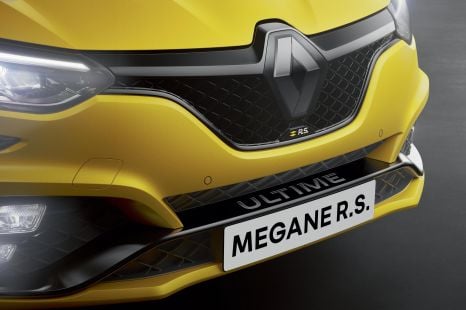

Ben Zachariah
Renault Sport may be revived to bridge gap to Alpine – report
11 Minutes Ago
Like the related Mazda 3, the CX-30 offers premium design and luxurious trimmings, though the G20 model's 2.0-litre engine lacks punch.



Marketplace Editor

Marketplace Editor


Marketplace Editor

Marketplace Editor
Quickly see how this car stacks up against its competition. Select any benchmark to see more details.
Where expert car reviews meet expert car buying – CarExpert gives you trusted advice, personalised service and real savings on your next new car.
There once was a time Mazda only sold the pint-sized CX-3 and mid-sized CX-5, with no in-between for those who wanted something a bit bigger than the former and slightly smaller than the latter.
So the Japanese brand decided to introduce the CX-30, essentially a high-riding version of the latest Mazda 3 hatchback proportioned smack bang in the middle of the two top-selling crossover nameplates.
Having launched Down Under in February 2020, the Mazda CX-30 has the tough task of competing in the fastest-growing segment in Australia’s new car market, against the likes of the popular Mitsubishi ASX, Toyota C-HR, Hyundai Kona and Kia Seltos.
Can it kick it with the segment leaders?
The CX-30 range kicks off at $29,990 plus on-road costs, but the G20 Evolve specification we have here on test is one up from base and priced from $31,490 before on-roads – representing a $3200 premium over the equivalent Mazda 3.
You can spend up to $43,490 before on-roads for a decked-out G25 Astina grade, with eight variants in total sitting in that $30,000 to $44,000 price bracket.
Our test car was optioned with Soul Red Crystal metallic paint ($495), bringing the as-tested sticker to $31,985 before on-roads.


Buy your new car without the stress. It's fast, simple and completely free.

Great service from Travis and team, second time I have used this business would not hesitate to recommend them to anyone
Craig C.
Purchased a Ford Ranger in Sunshine Coast, QLD
CarExpert helped Craig save $7,224 on his Ford Ranger, now let us save you on your next new car.
Get your BEST priceDespite being towards the bottom of the Mazda CX-30 hierarchy, the G20 Evolve comes with a healthy level of standard kit.
The Evolve grade picks up 18-inch alloys, dual-zone climate control with rear vents, an auto-dimming rear mirror, leather-wrapped gear knob and steering wheel, paddle shifters, and overhead sunglass storage compared to the base G20 Pure.
Features carried over from the entry-level model include an 8.8-inch widescreen navigation system with Apple CarPlay and Android Auto, a 7.0-inch digital instrument display, a colour head-up display, push-button start, a reversing camera with rear parking sensors, auto folding side mirrors, and cloth trim.
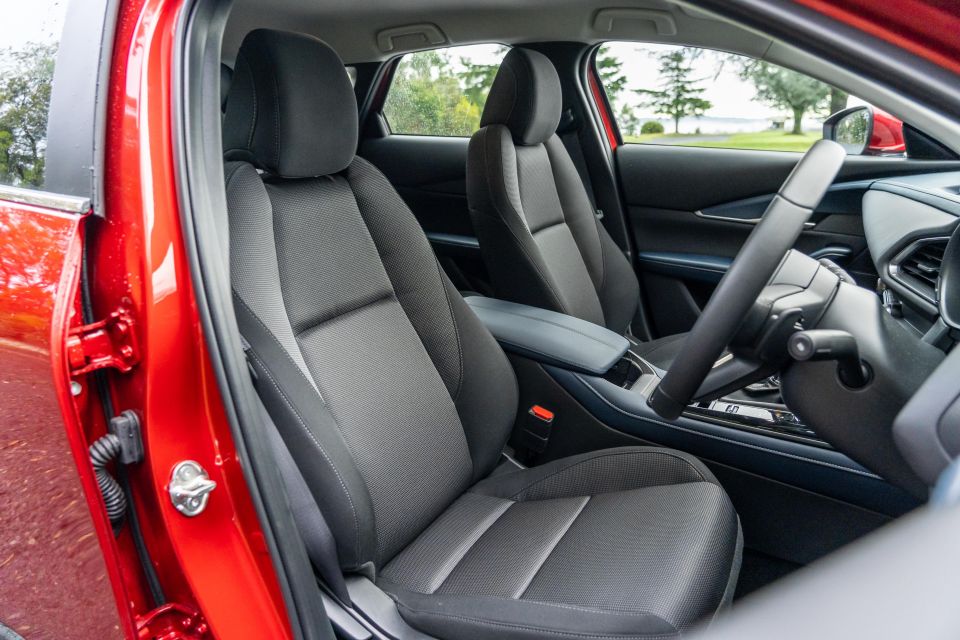

All versions of the Mazda CX-30 get a suite of active safety and driver assistance features as standard, including low- and high-speed autonomous emergency braking (AEB), lane departure warning with lane-keep assist, blind-spot monitoring with rear cross-traffic alert, traffic sign recognition, and adaptive cruise control with stop/go.
For an additional $1500 (not fitted to our test car), you can also get the optional Vision Pack which adds driver attention monitoring, a 360-degree camera system with front parking sensors, front cross-traffic alert, and a semi-autonomous ‘Cruising & Traffic Support’ system which combines the adaptive cruise and lane-keep system to assist with accelerating, braking and steering on the highway.
Given the accessibility to the company’s ‘Vision Technologies’ across the line-up (standard on Astina grades) we’d certainly recommend spending the extra money to deck your CX-30 out with these high-end assistance features.
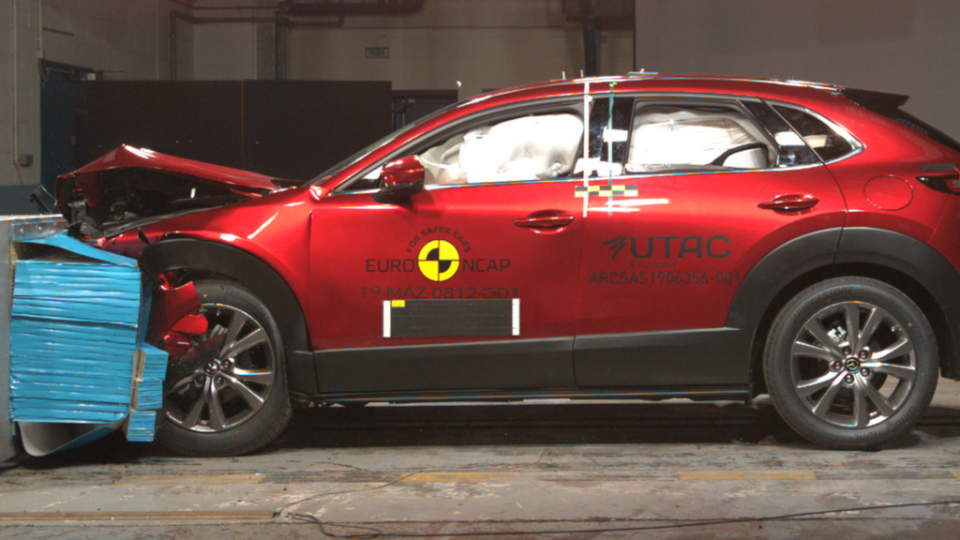
Yes, in fact the Mazda CX-30 is one of the safest vehicles you can buy at any price point. The CX-30 wears a 2019-stamped ANCAP safety rating, based on tests conducted by Euro NCAP.
Applicable to all versions on sale in Australia and New Zealand, the CX-30’s five-star score incorporates an impressive 99 per cent for adult occupant protection, 88 per cent for child occupant protection, 80 per cent for vulnerable road users and 76 per cent for safety assist.
Standard safety and assistance equipment includes the aforementioned low- and high-speed AEB (4-80km/h) with pedestrian and cyclist detection, lane departure warning with lane-keep assist, blind-spot monitoring with rear cross-traffic alert, traffic sign recognition as well as adaptive cruise control with stop/go.
There’s also seven airbag (incl. driver’s knee) and ISOFIX anchorage points on the outboard rear seats.
Despite the impressive scores, some of the key feedback included marginal neck protection for the 10-year old dummy in the 64km/h frontal offset test, along with weak/poor performance of the AEB system at night in a range of scenarios.
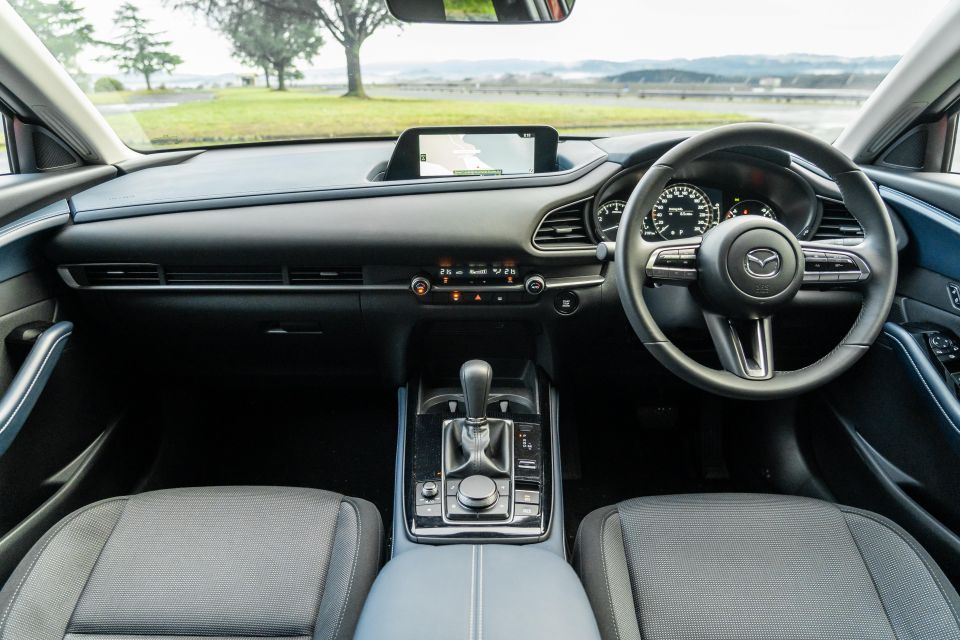
Compared to the vast majority of vehicles in this segment, plush. The interior of the CX-30 is essentially lifted out of the related Mazda 3 small car, and that’s no bad thing.
From the driver’s seat your view is dominated by curved surfaces finished in soft-touch leatherette materials capped by the 8.8-inch display sitting proudly sitting atop the dashboard.
In the Pure and Evolve trims, where fabric seat trim is standard, you get blue leather-look cabin accents with white stitching, which can look a little out of place if you have the Soul Red Crystal exterior paint like we do here.
That said, the front row of the Mazda CX-30 is a really nice place to be. The seats are comfortable and supportive, all the touch points are soft and squidgy, the design is attractive and looks expensive, and the ergonomics are very good.
I’d even go as far to say it’s very Volkswagen in the way everything is so clean and simple, though the curvaceous design and premium touches are more akin to something like a Lexus or BMW.
Everything feels well screwed together, and all the switchgear also presses or turns with weighting or daming that feels solid and high-end. Long story short, it’s a nice place to sit even though this is one of the lower-end models in the CX-30 range.
Storage is pretty good too, with cubbies in the doors that will hold large bottles, a shelf under the centre stack that will hold a large phone, two decent-sized cupholders, and a huge bin under the centre armrest.
My personal highlight is the driver’s instrument cluster. The 7.0-inch virtual speedometer dial has three different views so you can have a traditional dial, fuel consumption, or driver assist displays.
It’s identical to the one used in the new 3, and has slowly started to rollout across top-spec versions of other vehicles in the line-up such as the CX-5, Mazda 6, CX-8 and CX-9. The high refresh rate and resolution are just lovely.
Drivers of the CX-30 will also appreciate the standard inclusion of a colour head-up display, which projects onto the windscreen rather than through a pop-up polariser like older Mazdas.
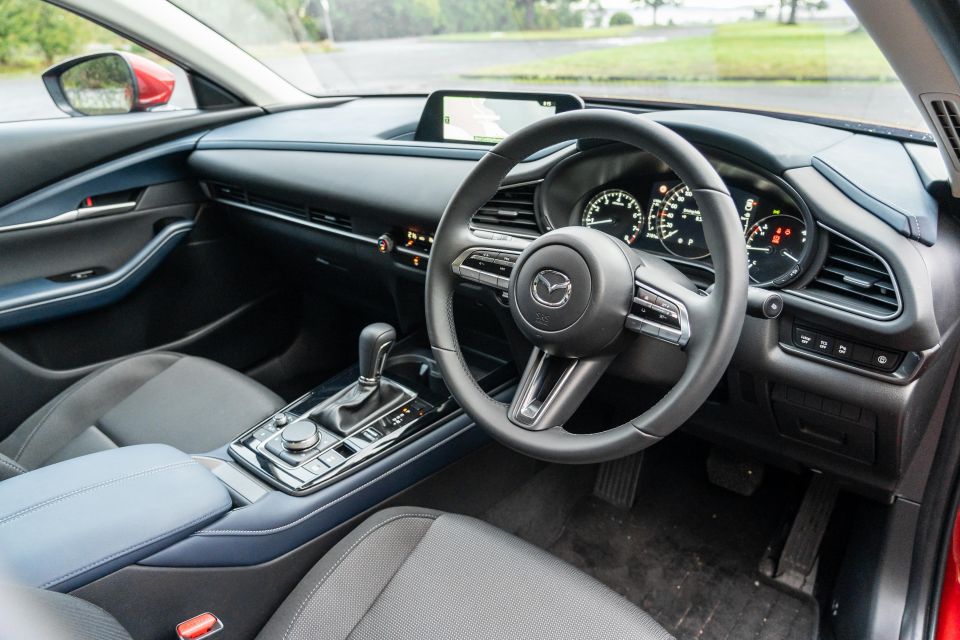
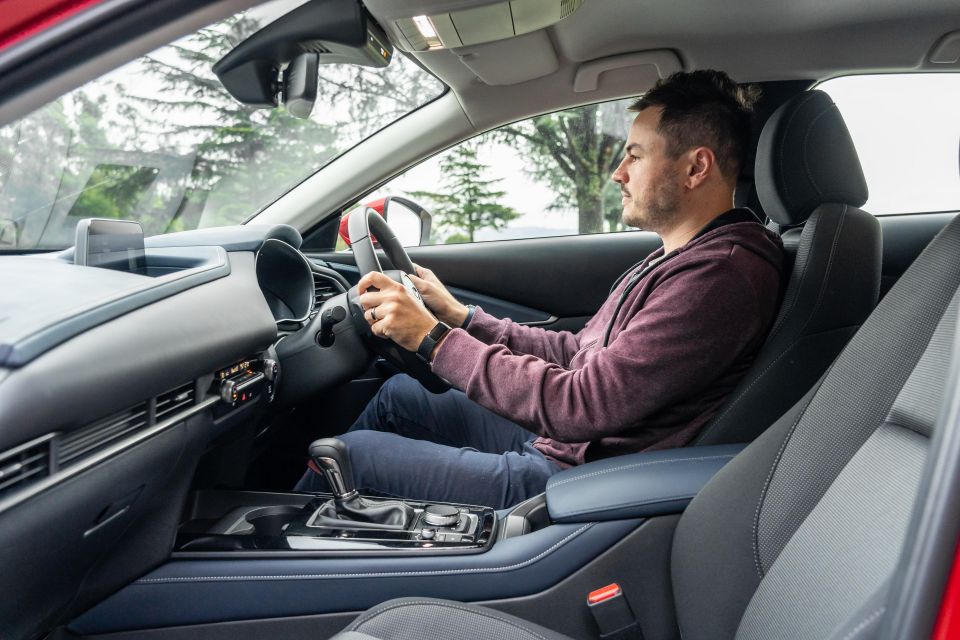
Hop into the second row, and it’s not quite as great.
Like the Mazda3, the Mazda CX-30 isn’t the last word in rear passenger accommodation. Legroom is barely adequate, especially behind a taller driver, and headroom isn’t amazing either. My hair was brushing the ceiling and I’m a little over six-foot-one.
My younger brother – who is about an inch taller than me – also complained of the rear seat backrest being too upright. There’s no adjustment for these either, which is a shame.
While the feeling of space isn’t so great in the back seat, passengers will appreciate the fold-down centre armrest with cupholders, rear air vents, and bottle holders in the doors.
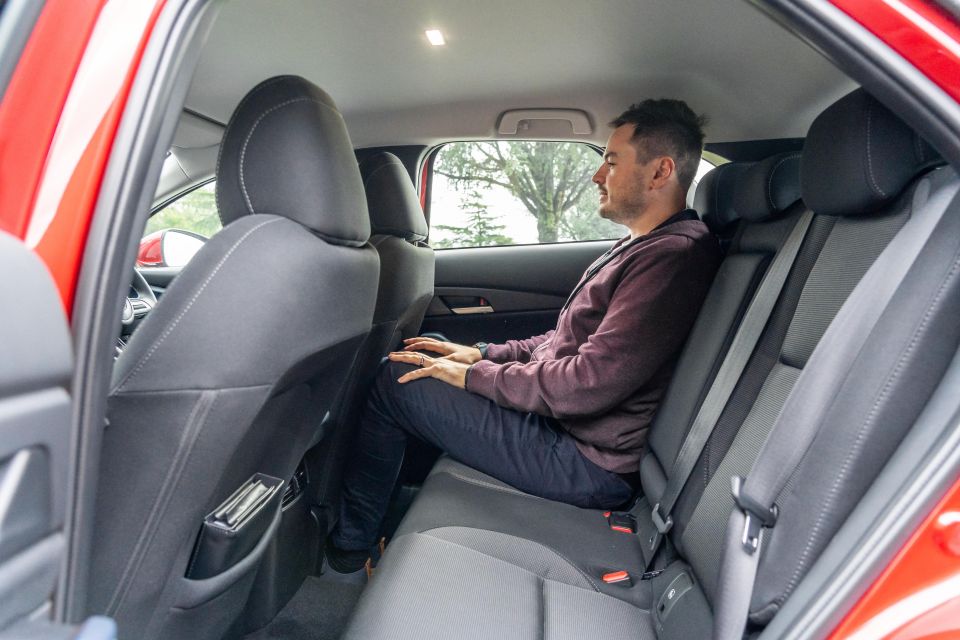

Unfortunately, there’s no USB or 12V outlets like in the front, so your friends or family in the back can’t charge their mobile devices. The door trims in the rear also lose the soft-touch material at the top, though the padded leatherette elbow rests and door inserts carry over.
The luggage area doesn’t really shine on paper compared to rivals, either. Mazda claims just 317L of capacity in five-seat layout, which is about 100-150L shy of something like the capacious Kia Seltos – the company doesn’t offer a quoted volume with the second row folded, either.
Under the boot floor you’ll find a space-saver spare in all CX-30 models.
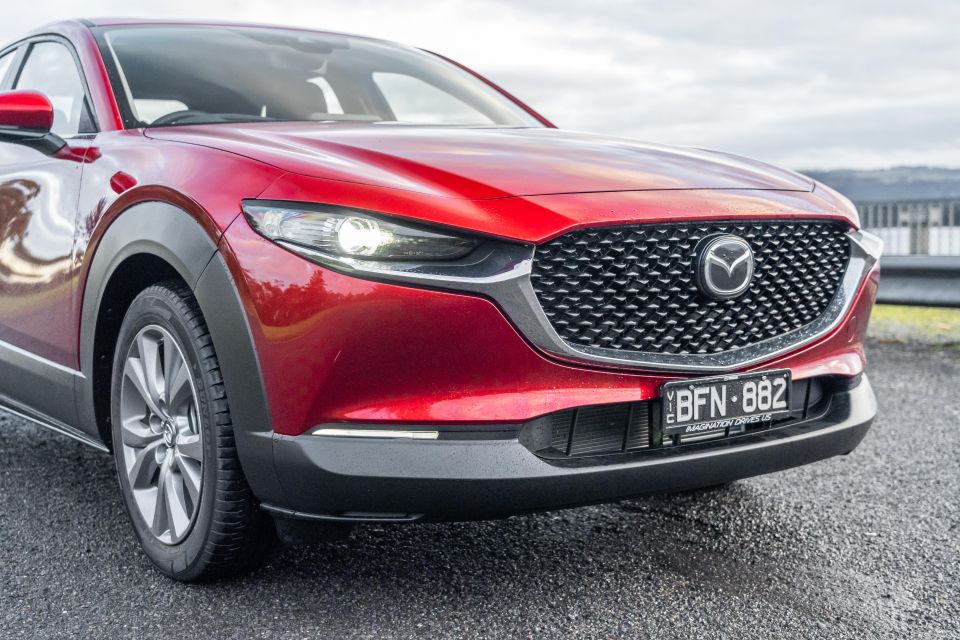
All Mazda CX-30 models designated ‘G20’ are powered by the company’s 2.0-litre ‘Skyactiv-G’ naturally-aspirated four-cylinder petrol engine, developing 114kW at 6000rpm and 200Nm at 4000rom.
The 2.0-litre models also exclusively drive the front wheels via a six-speed automatic as standard. While Australia’s CX-30s are auto only, there is a six-speed manual offered overseas.
Mazda quotes a 10.2-second 0-100km/h time for the 2.0-litre CX-30, while fuel consumption is rated at 6.5L/100km on the combined cycle.
Fuel-saving idle stop/start technology is fitted as standard, and the CX-30 is happy running on 91 RON regular unleaded as well as E10. The fuel tank measures 51L.
Unlike the 2.5-litre engine fitted to ‘G25’ models, the 2.0-litre motor doesn’t feature cylinder deactivation for enhanced efficiency.
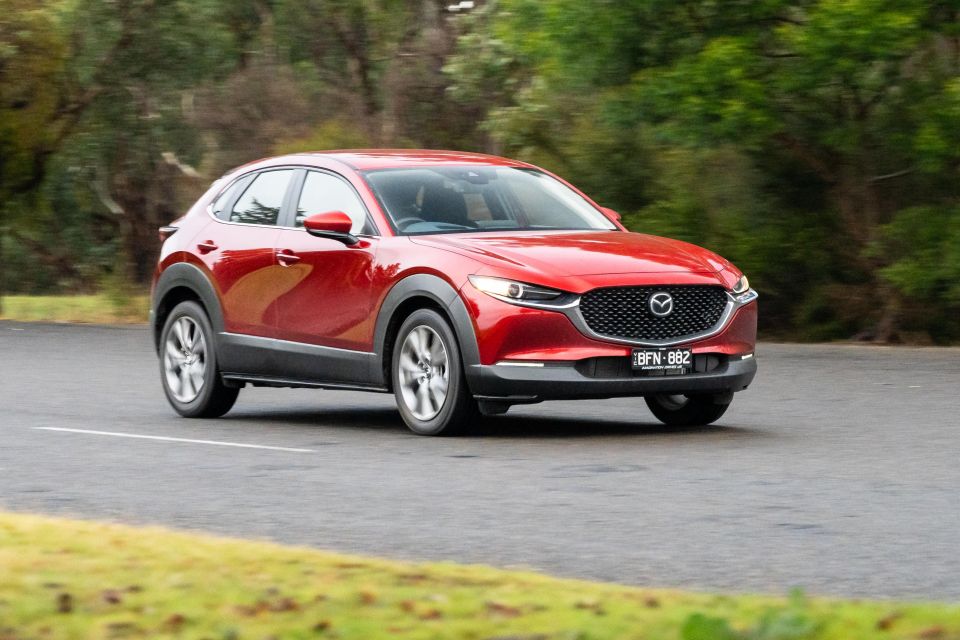
Buyers of small SUVs are generally looking for a vehicle that feels sure-footed and elevated from the road, and for the most part, the CX-30 delivers.
Owners of current or previous Mazda products will already be familiar with the G20’s drivetrain – given it’s largely carried over from the previous-generation Mazda 3 as well as currently doing service in the smaller CX-3 crossover – so the rev-happy nature of the motor as well as its high-pitched, occasionally noisy note won’t be too much of a surprise.
The 2.0-litre ‘Skyactiv-G’ engine is noticeably better suited to urban driving. It has surprisingly decent low-down urge to get up to city speeds without much fuss, and the six-speed automatic shifts quickly and intuitively to keep you in the power band when you need it and dropping the revs when cruising to aid efficiency.
Mazda’s ‘Zoom Zoom’ ethos is also evident from behind the wheel, thanks to the fluid, direct steering that offers a good amount of feedback to keep you in touch with the front wheels, without being too heavy to make parking or tight manoeuvres a hassle.
It’s actually once the speed starts to climb you start to feel the shortcomings of opting for the entry-level engine.
Despite making peak torque at 4000rpm and peak power at 6000rpm, the 2.0-litre CX-30 starts to run out of puff quickly as you hit the upper end, at times seeming to make more noise than progress.
It probably doesn’t help it tips the scales at 1360kg (tare) in this specification, which is 50kg more than the equivalent Mazda 3 G20 Evolve (which is pretty much identical mechanically) but more importantly 150kg more than a CX-3 sTouring with a similar 2.0-litre engine.
Once you’re at speed though, the CX-30 comfortably hums away in sixth at a little over 2000rpm, very well insulated from wind and road noise compared to many vehicles in the class.
I took the Mazda CX-30 on an extended highway run out to Melbourne’s south east and was very impressed with the vehicle’s open-road abilities despite being relatively compact, as well as its adaptive cruise and blind-spot features which came in handy on the notoriously busy ‘M1’ Monash Freeway.
The optional Cruise & Traffic Support would have been better again with its lane centring and steering assist capabilities – I’ve used this in a Mazda 3 and came away impressed with the level of sophistication at such an affordable price point.
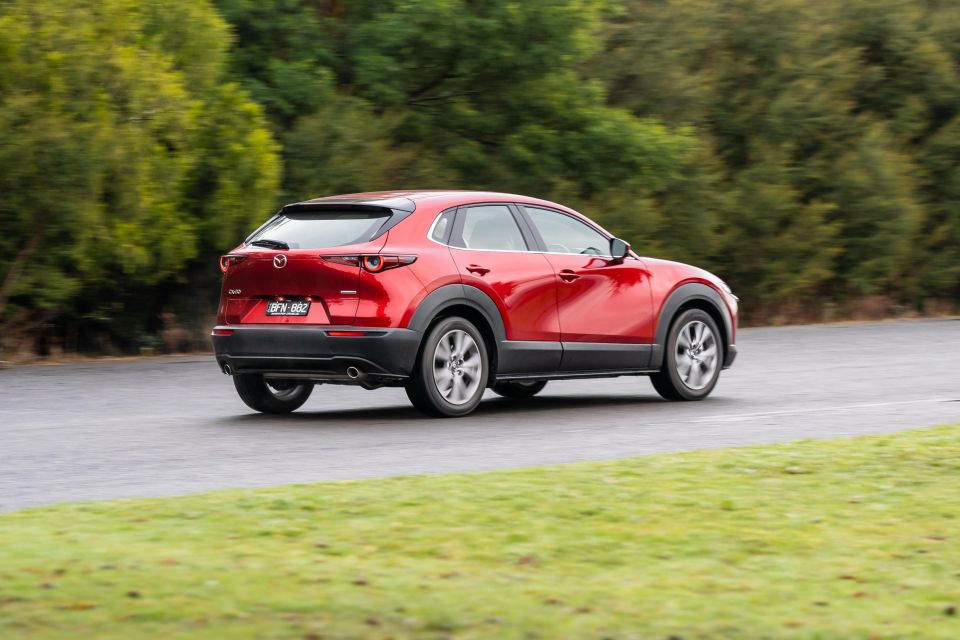
However, the ride can be a bit of a mixed bag depending on the conditions. Around town the firmer damping can get a little busy over small consecutive imperfections, bordering on jittery.
The aftermath of a speed hump can be a little sharp particularly at the rear, which can probably be attributed to the torsion beam on the rear axle.
Mazda copped a bit of flack for this at the launch of the latest Mazda 3 – considering the previous generation featured an independent rear setup which offered a great balance of comfort and engagement – and until this particular implementation I hadn’t really felt the impact of it.
It should ride better, especially given the raised ride height and chunkier tyres. At least the compromise there is that the CX-30 handles superbly, and feels a lot sharper than most crossovers deserve to.
While the steering isn’t quite as sharp or communicative as the Ford Focus Active, which would probably be the driver’s car of the segment, the CX-30 turns in nicely and does a good job at limiting body roll to car-like levels, also offering good grip from its 215/55 Dunlop SP Sport Maxx tyres.
The Mazda is very nice to steer, though the 2.0-litre engine isn’t the right motor for this level of dynamic ability nor are there paddle shifters if you’re looking to have a bit of fun.
Overall though, the Mazda CX-30 is a refined drive, only let down by a ride that’s borderline too firm and an uninspiring powertrain in this specification.
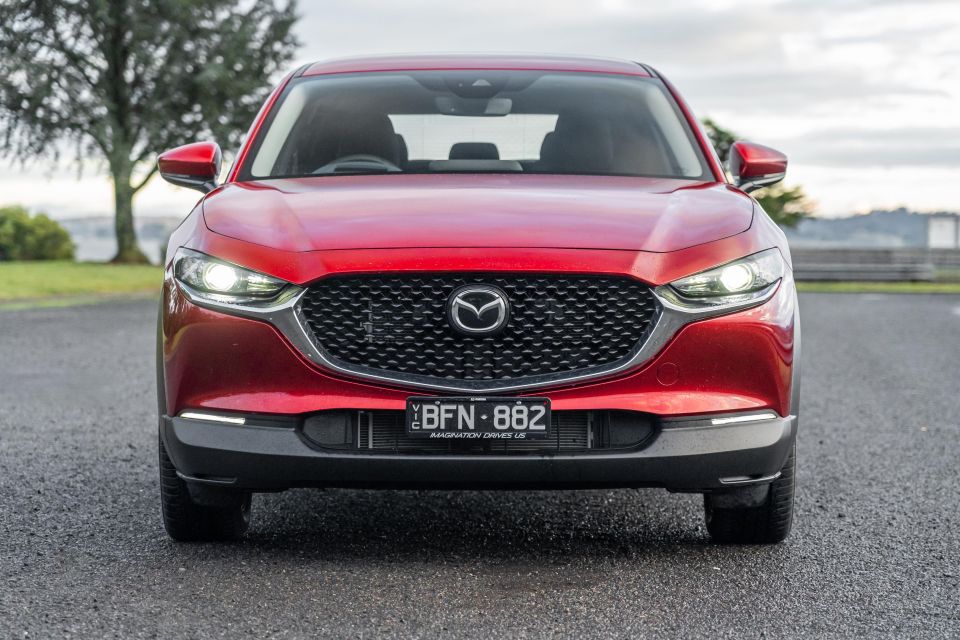
Like the wider Mazda range, the CX-30 is covered by a five year, unlimited kilometre warranty with five years of ‘premium’ roadside assistance.
Scheduled maintenance is required every 10,000km or 12 months, whichever comes first. It’s shorter than the 15,000km intervals offered by most rivals, but if you don’t drive a whole lot annually it’s just fine.
Mazda lists the first five ‘Base Scheduled Maintenance’ services at $315, $360, $315, $360 and $315, covering 60 months or 50,000km. That totals $990 for the first three years or 30,000km of ownership, and $1665 for the first five years or 50,000km.
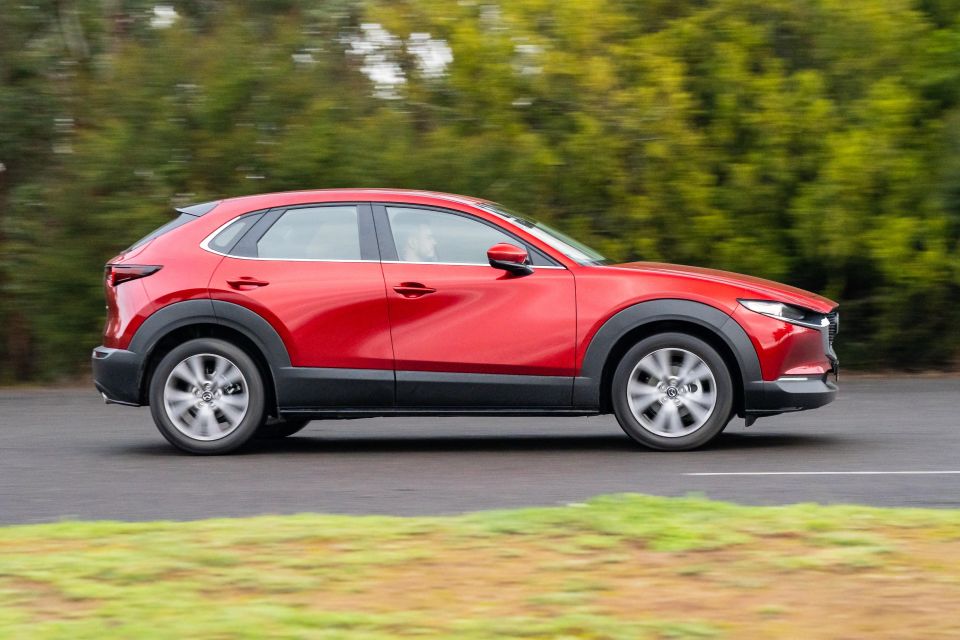
However, doesn’t include several items like cabin air filters (every 40,000km) or brake fluid (every 40,000km/24 months), which ask for $100 and $71 at their respective intervals.
We found the real-world fuel efficiency to be fairly average at best, with the trip computer indicating use of 8.2L/100km during our week with the car – a decent amount up on the manufacturer’s 6.5L/100km combined claim.
That equates to a realistic driving range of around 500-600km per fill of the CX-30’s 51-litre tank. At least the Mazda will happily run on cheaper 91 RON unleaded.
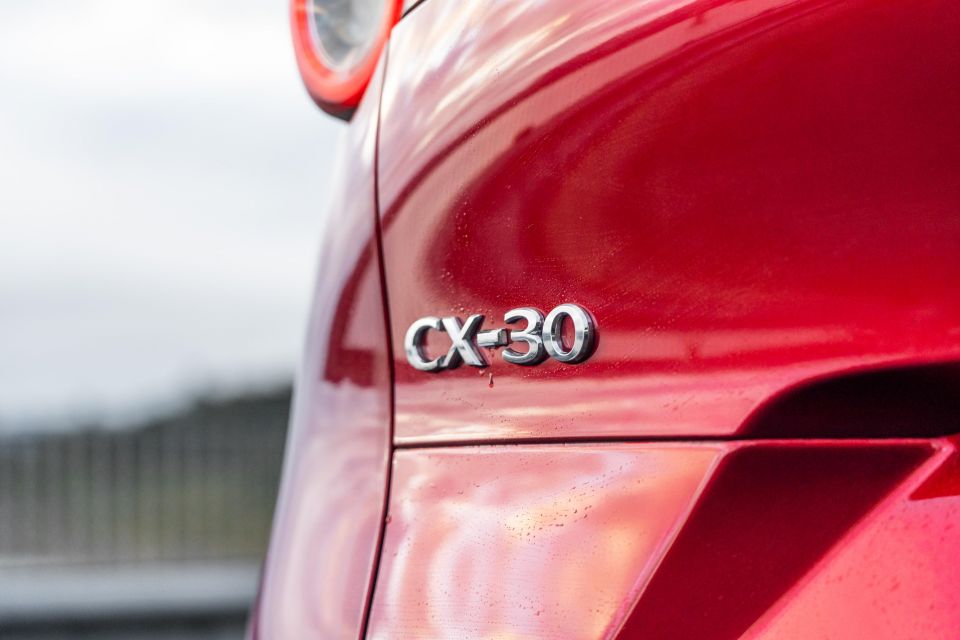
Buy your new car without the stress. It's fast, simple and completely free.

Great service from Travis and team, second time I have used this business would not hesitate to recommend them to anyone
Craig C.
Purchased a Ford Ranger in Sunshine Coast, QLD
CarExpert helped Craig save $7,224 on his Ford Ranger, now let us save you on your next new car.
Get your BEST priceMazda’s newest member of its SUV family is more than worthy of being considered one of the segment benchmarks, and should prove to be very popular with Australian buyers.
It brings a welcome sense of premium design and materials to an often uninspiring class – which rarely offer a compelling value argument compared to the equivalent hatchback. Compared to the Mazda 3 hatch, it also offers more boot space and better headroom for rear passengers.
The CX-30 is also relatively quiet, comfortable and refined to drive, much like the Mazda 3 small car on which it’s based. I can genuinely say it’s almost on par with the Lexus UX in most regards.
However, it’s not all peaches and cream. Mazda’s 2.0-litre petrol engine may be fine in the CX-3 and the Mazda 3, but the added weight of the CX-30’s more voluptuous body really shows the limits of this powertrain.

Where expert car reviews meet expert car buying – CarExpert gives you trusted advice, personalised service and real savings on your next new car.
If you drive 90 per cent in urban areas and you don’t have to deal with a lot of hills or carry a lot of people often, then it’s fine. That said, I would recommend the extra spend for the G25 Touring (from $36,490) should you be able to stretch your budget for the entry-level 2.5-litre model.
It’s a shame Mazda doesn’t offer a G25 Evolve specification for around $34,000, or a torquier diesel option for those wanting a bit more oomph for open-road touring.
Mazda will, however, introduce its trick Skyactiv-X compression-ignition petrol engine with mild-hybrid tech in August, which combines the power and high-revving nature of a petrol engine with the lower-end torque and efficiency of a diesel – though it will only be available on the top-spec Astina AWD nudging $50,000.
Without digressing too much, the Mazda CX-30 G20 Evolve is a very competent small SUV for relatively affordable pricing. If you’re in the market for a compact crossover and want it to look and feel luxurious, this is definitely worth a look.
Where expert car reviews meet expert car buying – CarExpert gives you trusted advice, personalised service and real savings on your next new car.
James Wong is an automotive journalist and former PR consultant, recognised among Australia’s most prolific motoring writers.


Ben Zachariah
11 Minutes Ago
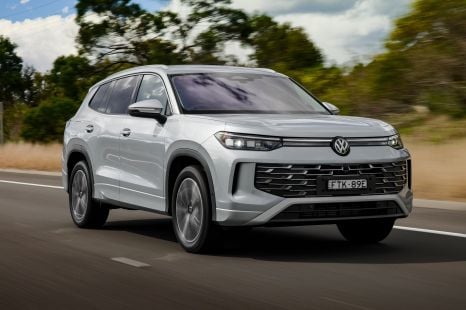

Damion Smy
44 Minutes Ago
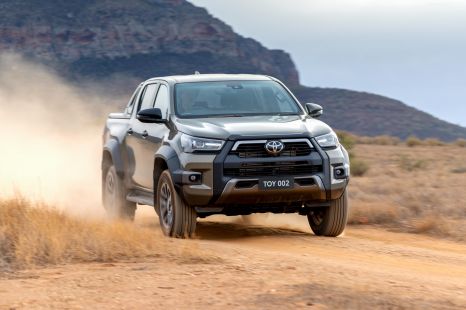

Damion Smy
2 Hours Ago
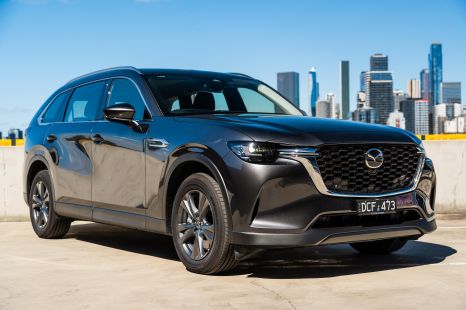

William Stopford
2 Hours Ago
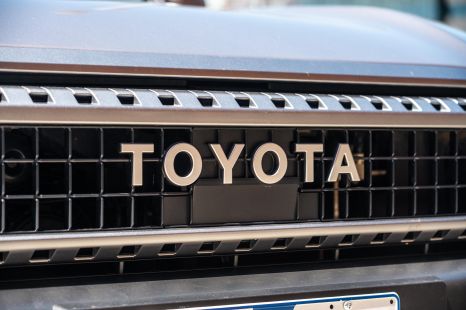

Damion Smy
3 Hours Ago
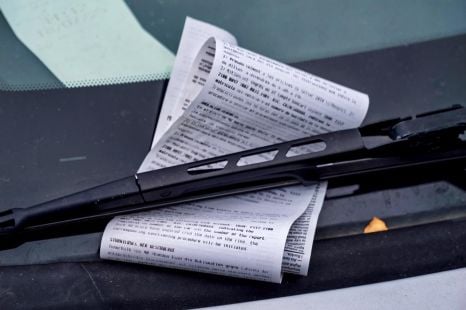

Ben Zachariah
4 Hours Ago